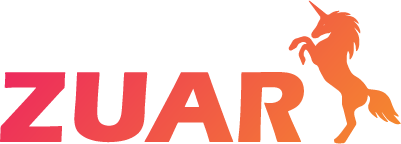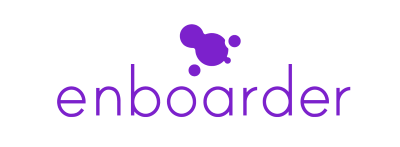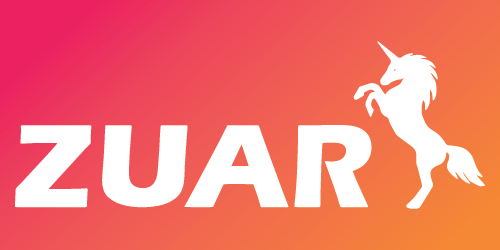What Are Business Analytics Tools? Benefits, Use Cases & More
Learn how you can leverage business analytics tools to supercharge your data-driven decision-making!

Overview
In today’s data-driven world, businesses are increasingly leveraging the power of business analytics tools to stay ahead of the competition.
These tools help organizations transform raw data into actionable insights, enabling better decision-making and improved performance. But with so many options available, how do you choose the right business analytics tool for your organization?
In this article, we’ll explore the different types of tools, their features, top software solutions, emerging trends, and how implementing these tools can boost your ROI. Let’s dive in!

Understanding Business Analytics Tools
Business analytics tools, designed to analyze data and recognize trends, support informed decision-making by transforming raw data into actionable insights, thus optimizing business performance.

Types of Business Analytics Tools
There are a wide variety of business analytics tools that cater to different use cases. Here is a non-exhaustive list of the types of business analytics tools that are available:
- Descriptive Analytics Tools: These tools help in summarizing historical data to gain insights into what has happened within a business. Examples include basic reporting, dashboards, and scorecards.
- Diagnostic Analytics Tools: These tools focus on why something happened. They often involve more in-depth analysis to understand causes and reasons behind certain business outcomes. Root cause analysis and drill-down tools are part of this category.
- Predictive Analytics Tools: These tools use historical data to forecast future outcomes. They include machine learning algorithms, regression analysis, and data mining techniques.
- Prescriptive Analytics Tools: These tools go beyond prediction to recommend actions to optimize outcomes. They suggest possible outcomes and the implications of each decision. Optimization and simulation tools fall under this category.
- ETL/ELT Tools: ETL (extract, transform, load) and ELT (extract, load, transform) tools are software applications designed to extract data from various sources, transform it into a consistent format, and then load it into a target database or data warehouse, facilitating data integration and analysis.
- Data Visualization Tools: These tools help in presenting data in a visual format, making complex data easier to understand. Examples include Tableau and Power BI.
- Statistical Analysis Tools: These tools perform statistical analysis, helping businesses understand relationships between variables, make inferences, and validate findings. Software like R, Python (with libraries like Pandas, NumPy, and SciPy), and SPSS fall into this category.
- Text Analytics Tools: These tools are designed to analyze unstructured text data, such as sentiment analysis, language processing, and natural language processing (NLP).
- Big Data Analytics Tools: These tools are specifically tailored to manage and analyze large volumes of data. Examples include Hadoop, Spark, and NoSQL databases.
Key Features to Look for
Selecting a business analytics tool requires careful consideration of key features that align with your organization’s needs.
A user-friendly interface is essential, as it allows users to quickly and easily interact with the tool, reducing the learning curve and minimizing the need for extensive training.
Data storage capacity is another important factor, as it determines the tool’s ability to manage large volumes of data. Integration possibilities should also be considered, as they enable seamless connection with existing systems and data sources.
Advanced analytics options, such as text mining, time series, and what-if analysis, are effective predictive analytics techniques that can provide valuable insights for your organization.
Finally, customization capabilities allow for tailored solutions that meet your organization’s unique requirements. By considering these key features, you can ensure that you select the right business analytics tool for your organization.

Top Business Analytics Software Solutions
This section highlights two of the top business analytics software solutions—Microsoft Power BI and Tableau. We'll also touch on how these platforms can be enhanced using Zuar's solutions.
Microsoft Power BI

Microsoft Power BI is a powerful business analytics tool that enables organizations to visualize and share insights from their data. It offers a suite of features for data preparation, data modeling, visualization, and sharing, allowing users to create interactive and detailed reports and dashboards.
Power BI connects to a wide range of data sources, providing robust capabilities for data analysis, helping users make informed business decisions.
Tableau

Tableau is another widely used and highly regarded data visualization tool that allows users to create interactive and shareable dashboards and reports.
It enables users to connect to various data sources, visualize data in the form of charts, graphs, and maps, and gain insights through interactive exploration.
Tableau is known for its user-friendly interface and powerful analytical capabilities, making complex data easily understandable for both technical and non-technical users.
Connecting to Power BI and Tableau With Zuar

By utilizing Zuar's solutions in conjunction with Power BI and Tableau, you can create an end-to-end data pipeline and easily and securely share your data visualizations and insights with all your stakeholders.
As an ELT platform, Zuar Runner can automate the collection and preparation of data from disparate sources and consolidate it in a data warehouse or data lake where it can be visualized using Power BI or Tableau.
From there, Zuar Portal be used to create an easily customizable analytics headquarters for all your dashboards and visualizations. This creates an analytics 'one-stop shop' for employees, customers, vendors, and more.
Learn more about Zuar's solutions...


Emerging Trends in Business Analytics
As the world of business analytics continues to evolve, several emerging trends are shaping the future of the industry.
This section explores two significant trends: the integration of artificial intelligence (AI) and machine learning (ML) for advanced data analysis, and the growing prominence of real-time data analysis for prompt decision-making.
Understanding these trends and their potential impact on your organization helps leverage the latest business analytics advancements, staying competitive and extracting more value from your data.

Artificial Intelligence and Machine Learning
The integration of AI and machine learning in business analytics is revolutionizing the industry by automating data analysis processes and providing more precise predictions and insights.
AI and machine learning enable the analysis of large amounts of data to uncover patterns and insights that would otherwise be difficult to detect.
By automating repetitive tasks, conducting high-volume data analysis, and improving itself through iteration, AI can help businesses make more informed decisions and gain a competitive advantage.
Additionally, AI and machine learning can help automate processes, lower costs, and enhance customer experience.
With the continuous advancement and increased accessibility of AI and machine learning, organizations should explore these technologies’ potential benefits and consider their integration into business analytics strategies for maintaining a competitive edge.
Real-Time Data Analysis
Another emerging trend in business analytics is the growing importance of real-time data analysis.
Real-time data analysis allows businesses to rapidly recognize trends and make decisions based on the most current information. This can facilitate businesses to stay ahead of the competition and make decisions that are more knowledgeable and effective.
Real-time data analysis enables organizations to make informed decisions promptly, thereby enabling them to respond to market fluctuations and customer requirements in a more efficient manner.
As the need for real-time insights continues to grow, organizations must prioritize real-time data analysis in their business analytics strategies to ensure they’re making the most informed decisions possible and staying competitive in today’s fast-paced business landscape.

Implementing Business Analytics Tools
The strategic process of implementing business analytics tools starts with defining clear objectives, evaluating and comparing various tools, and choosing the solution best suited to your organization’s needs.
By following a structured approach, you can ensure that your organization is equipped with the right tools to drive insights from your data and improve overall business performance.
The following subsections discuss the steps involved in implementing business intelligence tools, offering a blueprint for success in your analytics journey.
Defining Objectives
Defining objectives helps organizations identify the specific goals they want to achieve with business analytics tools, such as improving customer experience or optimizing operations.
To define your objectives, start by considering the overall goals of your organization and how business analytics tools can support those goals.
For instance, a retail company may want to analyze customer data to recognize patterns and optimize operations.
Similarly, a healthcare organization may use business analytics tools to examine patient data to enhance patient care.
By clearly outlining your objectives, you can ensure that your analytics initiatives are focused on driving meaningful outcomes for your organization.
After defining your objectives, ensure they are realistic and achievable. This may involve setting measurable targets and regularly reviewing progress to ensure that your analytics initiatives are on track to deliver the desired results.
Evaluating and Comparing Tools
Consider the following factors when evaluating and comparing tools to determine the best fit for your organization:
- Features: Ensure that the tool in questions has the features you require to meet the objectives you've set out to achieve.
- Pricing: The tool needs to fit in the budget you have in place.
- Usability: The tool must be intuitive enough for your users to use effectively.
- Scalability: As the size of your business grows, you must ensure that the tool you have selected will continue to work effectively and not need to be replaced.
As part of this process, it’s essential to test the tools in real-world scenarios to gain insight into their performance.
By carefully evaluating and comparing various business analytics tools, you can ensure that you select the right solution for your organization’s unique needs and objectives, setting the stage for a successful implementation and a strong return on investment.
Consulting With an Expert
Consulting with an expert when choosing and implementing a business analytics tool is critical to align the solution with your company's specific needs and technological landscape.
An expert can perform a detailed needs assessment, identifying the necessary features and integrations required for a seamless fit into your existing operations.
They bring a nuanced understanding of technical compatibility and are adept at navigating the complex web of integrating new tools with current systems.
Furthermore, experts offer invaluable market insights, drawing from a broad spectrum of analytics solutions to recommend the one that best matches your business objectives, size, and budget.
The guidance from an expert is indispensable during the implementation phase, helping to avoid common pitfalls and ensuring a cost-effective deployment.
They ensure you're well-equipped for a successful rollout, balancing upfront costs with long-term value, thereby maximizing the impact and efficiency of your investment in business analytics.
At Zuar, our experts specialize in helping businesses find and implement the best solutions for their unique requirements. Click here to learn more about our data services.

Boosting ROI with Business Analytics
Business analytics tools can boost ROI by identifying development opportunities, reducing costs, and enhancing efficiency.
By leveraging data-driven insights, organizations can uncover new revenue streams, streamline operations, and ultimately improve their bottom line.
In the following subsections, we will explore specific strategies for identifying opportunities for growth and reducing costs and increasing efficiency with the help of business analytics tools.
Identifying Opportunities for Growth
Identifying growth opportunities involves analyzing sales trends, customer preferences, and market conditions to uncover new revenue streams and expand existing ones.
Some methods for analyzing sales trends include evaluating sales data over time, identifying correlations between sales and external factors, and utilizing predictive analytics to anticipate future sales.
To evaluate customer preferences, consider surveying customers, assessing customer feedback, and employing customer segmentation to distinguish different customer groups.
Assessing market conditions may involve researching competitors, examining industry trends, and leveraging market intelligence to identify potential opportunities.
By identifying and capitalizing on growth opportunities, organizations can drive increased revenue and boost their return on investment in business analytics tools.
Reducing Costs and Increasing Efficiency
Reducing costs and increasing efficiency can be achieved through:
- Data-Driven Decision-Making: Utilizing data to inform decisions and strategies, discerning patterns and trends, and using those insights to make decisions that will assist in attaining desired outcomes.
- Optimizing Resource Allocation: Allocating resources in a way that maximizes their effectiveness and minimizes waste.
- Streamlining Processes: Identifying and eliminating unnecessary steps, manual processes, or bottlenecks in workflows to improve efficiency.

Case Study: Success Story in Business Analytics
To illustrate the importance of business analytics tools, we'll look at how Enboarder was able to revolutionize its data stack by partnering with Zuar.
Enboarder's Story

Enboarder originally faced a challenge with disparate data sources, requiring a consolidated analytics solution to disseminate data insights across the company.
Initially relying on Salesforce as their defacto analytics platform, Enboarder sought to establish an advanced business analytics platform that could efficiently unite, store, and visualize their diverse insights.
Their solution was to implement Zuar's suite of business analytics tools, leveraging Zuar Runner to gather and prepare data from multiple sources, while utilizing dbt for orchestration.
Tableau served as the visualization platform, allowing for the creation of insights. The dissemination of these insights was achieved securely using Zuar Portal, granting stakeholders self-serve access.
As a result of adopting cutting-edge business analytics tools, Enboarder now benefits from regular hourly and daily data snapshots feeding into their data warehouse and various analytics/visualization tools.
Their marketing, customer success, and sales teams have fully embraced and utilized these insights.
Learn more about this case study...

This success story highlights how business analytics tools, like Zuar's suite of products, can transform business outcomes.

Challenges and Pitfalls to Avoid
Like any new technology implementation, adopting business analytics tools comes with potential challenges and pitfalls to avoid.
Some common challenges include:
- Selecting the wrong tool for your organization’s needs
- Failing to define clear objectives
- Not investing in proper training and support for users.
To avoid these pitfalls, it’s essential to carefully evaluate the specific requirements of your organization and verify that the tool is able to fulfill them.
Be sure to define clear and measurable objectives that align with your organization’s overall goals and ensure that the tool is capable of supporting those objectives.
Investing in comprehensive and tailored training and support for users is also crucial to the successful implementation of business analytics tools.
By providing the necessary resources and guidance, you can ensure that your team is well-equipped to leverage the full potential of your chosen business analytics tool and drive maximum value from your investment.

Choosing the Right Tools for You
Business analytics tools are a powerful means for organizations to transform raw data into actionable insights, enabling better decision-making and improved performance.
By implementing these tools effectively and avoiding common pitfalls, you can unlock the full potential of your data and drive significant value for your organization.
Meet with one of our data experts to determine which business analytics tools are best for you. Also, learn more about how Zuar Runner can transform your data pipeline and how Zuar Portal can democratize analytics access.
To take the next step, schedule a data strategy assessment with one of our data experts!




